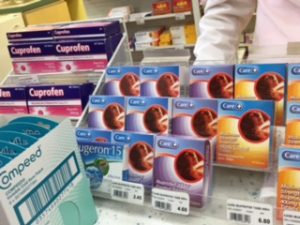 While on vacation in Bermuda, I found a box of private label ibuprofen for $2.45 for 20 – 200mg tablets, and one for Advil PM for $10.50 for the same number of pills, same strength.
While on vacation in Bermuda, I found a box of private label ibuprofen for $2.45 for 20 – 200mg tablets, and one for Advil PM for $10.50 for the same number of pills, same strength.
I’ve just returned from a lovely week’s holiday. When I travel, whether for work or vacation, it’s always a sort of Busman’s Holiday for me as I love to seek out health destinations wherever I go. So it was natural for me to spot the Dockyard Pharmacy at the port in Hamilton and wander in.
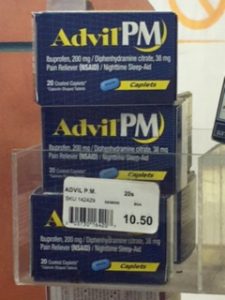 I made my way back to the well-stocked pharmacy counter, struck by the preponderance of three key categories of products that tourists (sailors, cruise ship passengers, beachcombers, and resort guests) would demand in such a location: medicines for gut health (THINK mal de mer treatments: Bonine, Dramamine, Benadryl), pain (acetaminophen, ibuprofen, naproxen sodium, and aspirin), and skin ailments for sunburn and renters of bikes and scooters who fall in accidents – a frequent occurrence, according to the pharmacist with whom I spoke, Bernie O’Reilly.
I made my way back to the well-stocked pharmacy counter, struck by the preponderance of three key categories of products that tourists (sailors, cruise ship passengers, beachcombers, and resort guests) would demand in such a location: medicines for gut health (THINK mal de mer treatments: Bonine, Dramamine, Benadryl), pain (acetaminophen, ibuprofen, naproxen sodium, and aspirin), and skin ailments for sunburn and renters of bikes and scooters who fall in accidents – a frequent occurrence, according to the pharmacist with whom I spoke, Bernie O’Reilly.
Bernie is a native of Ireland who moved to Bermuda as a pharmacist in 2011. She said the weather is better in Bermuda and the Dockyard Pharmacy a very interesting place to work.
As we chatted, I noticed two over-the-counter (OTC) drugs displayed right in front of me on the counter: Advil PM (ibuprophen) and a store private label version for the same strength and the same number of pills. The price difference between the brand versus the private label $8.05. The per-pill-cost for Advil was 52.5 cents; for the store brand, just over 12 cents.
Bernie sees travelers from all over the world, and everyone but Americans purchase the store brand at 12 cents a pill. U.S. customers, though, nearly always pick the brand (in this case, Advil). I asked Bernie why she perceived Americans chose Advil over the cheaper, generic ibuprophen in the simpler package. “They think the quality is better because it’s a brand they know,” she said. “But it’s the same strength,” she noted, and for a couple of dollars more, the consumer could buy an even stronger version with 400mg for $6.80 and double the number of tablets in the package.
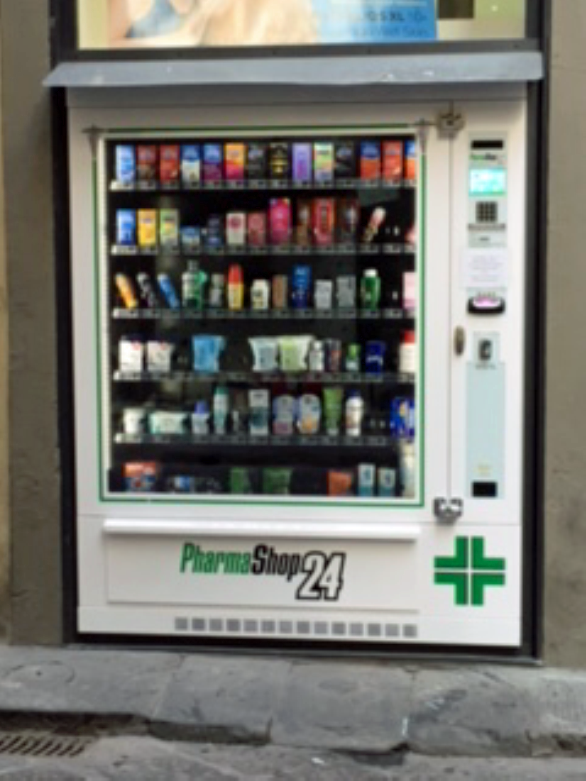 Here was a scenario of transparency at the point of purchase, where value is in the eye of the beholder.
Here was a scenario of transparency at the point of purchase, where value is in the eye of the beholder.
I told Bernie about a recent trip to Florence, Italy, where I encountered this vending machine, the PharmaShop 24, which is accessible to consumers 24×7 — most importantly, when the pharmacy is closed. The kiosk features a large range of products, from pain and gut meds to health and beauty, and condoms, as well. I pulled this photo up from my phone’s camera to share it with Bernie, who immediately saw the convenience and transparency benefits.
To be sure, consumer-facing prices of healthcare products vary by geography; in Bermuda, prices for “everything” whether food or aspirin are higher as it’s an island-nation: stuff costs more because it must be sailed or flown in, so transport and logistics costs must be tallied into the pricing strategy.
But the questions remain: should we buy ibuprofen for 12 cents or 87 cents? What’s the value of a brand? A reminder of home and safety? Is there a true qualitative difference between a private label and a global brand? Is there transparency on the package label about where the medicine was manufactured? If so, do consumers distinguish between a medicine made in India or Puerto Rico versus, say, Rahway, New Jersey?
Across health care, quality is not always reflected in the price of a good or service.
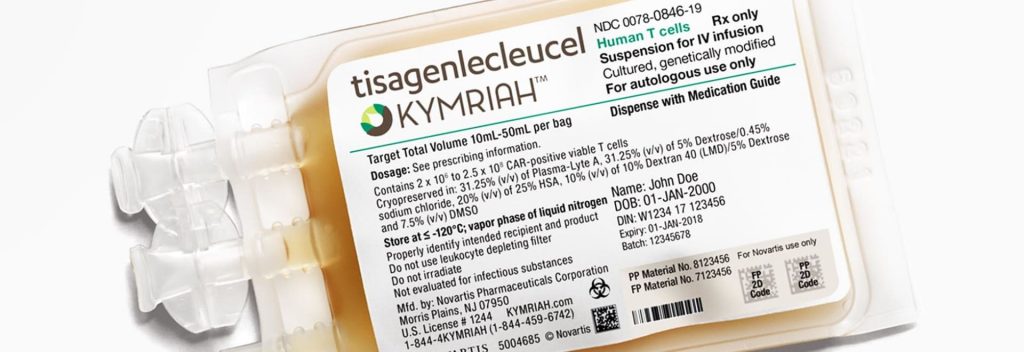 Health Populi’s Hot Points: While I was away on vacation, the FDA approved a new therapy for curing acute lymphoblastic leukemia (ALL) in young people, called Kymriah. It will be priced at $475,000 for one treatment.
Health Populi’s Hot Points: While I was away on vacation, the FDA approved a new therapy for curing acute lymphoblastic leukemia (ALL) in young people, called Kymriah. It will be priced at $475,000 for one treatment.
If the patient with ALL is your child, then $475,000 is a no-brainer. Note that this cost should be seen as the “sticker price.”
Novartis, the drug company behind this treatment, is adopting a creative pricing strategy: at this preliminary stage, the actual price for the therapy will vary by payor and patient financial circumstance. For patients enrolled in a Medicaid plan, Novartis will provide Kymriah for free if the young patient does not respond by the end of the first month of receiving the treatment, according to Consumer Reports. “Children from low-income families and children with special needs receive free care through Medicaid,” CR writes. The drug will have an aggressive patient assistance program for eligible un- or under-insured patients, with discounts, travel assistance, and free treatment for patients meeting certain criteria.
The pricing of medicines, whether OTC or for branded novel specialty therapies, remains a creative exercise. But value is still in the eye of the beholder-payor, whether Federal and State governments, employers, or end-user patients and their families. I recommend reading a recent take on the role of value in healthcare published in an October 2015 JAMA article, titled, Value-Based Payments Require Valuing What Matters to Patients.


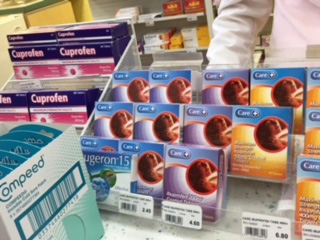


 Thanks to Feedspot for naming this blog, Health Populi, as a
Thanks to Feedspot for naming this blog, Health Populi, as a